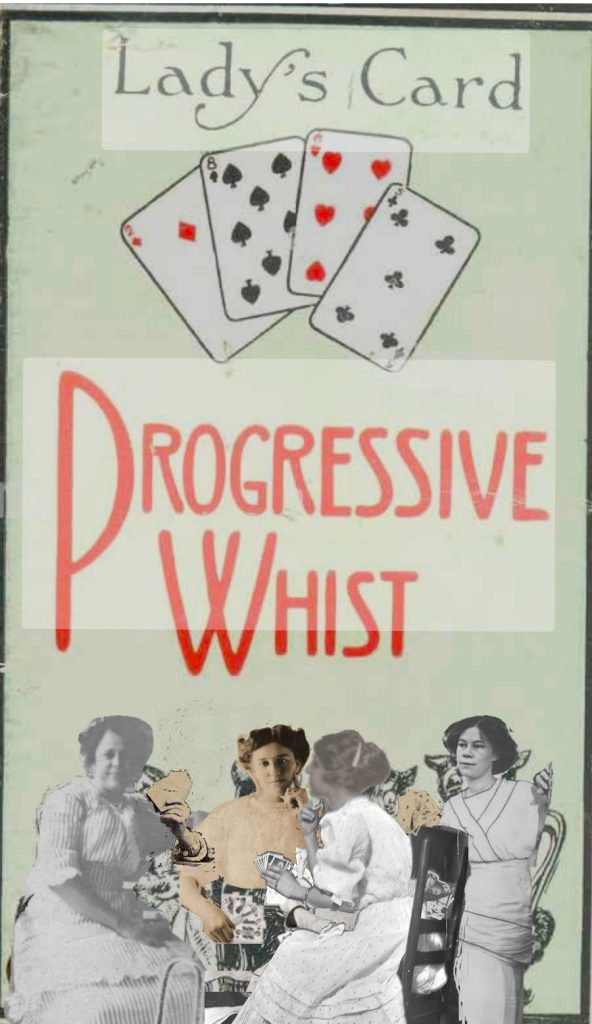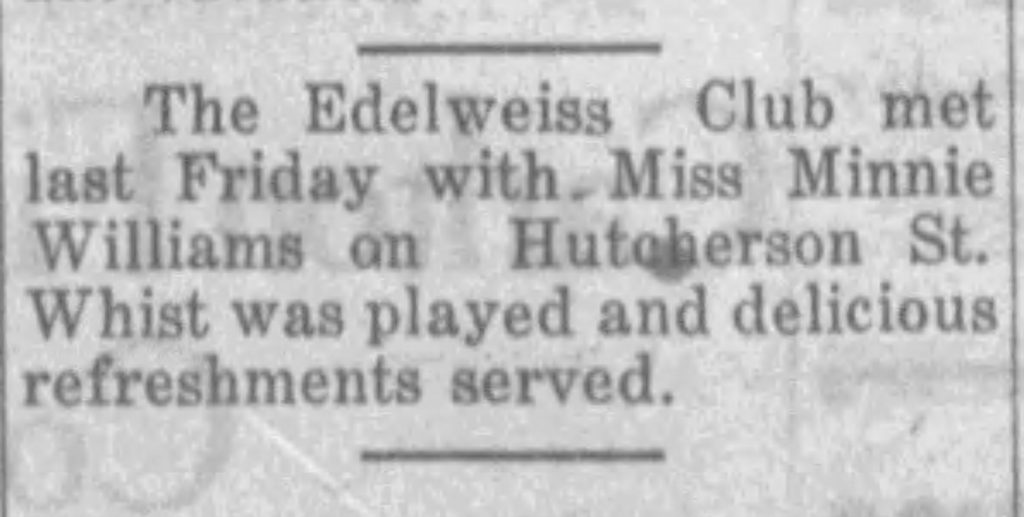
In 1918 and 1919 thirty-seven young women, friends and neighbors of my grandmother Fannie Mae Turner were members of the Edelweiss Club in Montgomery, Alabama. These are snapshots from their lives, place and times.
Click any image to enlarge
I did a quick survey on newspaper.com of the number of mentions “whist” received in Montgomery newspapers. I wanted to see how many people were playing, at least how many got their games into the newspaper. The Emancipator, the only black newspaper, reported 31 games of whist during 1918 and 1919. The Montgomery Advertiser, a white newspaper, reported 23 games during the same time and The Montgomery Times listed 7 games. When I added the word “progressive” there were 17 entries only from The Emancipator.
There was a graft on the side which showed that the number of mentions of “whist” was at a very low point before 1918 and that it peaked around 1920 and after a few years at the height, began going down, down, down. I pushed the years back and the resulting graph is below.
The link below gives directions for playing whist and defines progressive whist.
“Progressive whist or compass whist, is a competition format in which two players from each table move to the next table after a fixed number of games which are played to a fixed format e.g. with the designated trump suit changing each time.“
Whist – Wikipedia
Minnie Williams was born in Augusta, Georgia. She was one of the nine children of Edward and Catherine (McCord) Williams. Five of them survived to grow up. Her father was a carpenter and later worked on the railroad. Her mother didn’t work outside the home.
In 1910 Minnie was 16 and living with her older sister and her husband. Her sister was teaching, her brother-in-law was an minister. Minnie was teaching music. This is the second sixteen year old I have found teaching in Georgia. They lived in Waycross Georgia, where my grandfather Mershell was enumerated in 1910 as an auto mechanic working for the railroad.
Minnie was one of the teachers at Vesuvius School in 1919. She also hosted the Edelweiss Club at the home she shared her sister Lula Thomas and family. That year Minnie played the piano at a delightful luncheon where whist was played and Charlotte Ruse was served. She was socially active and could be found playing whist at various functions around town. She attended summer school at Columbia University in New York.
She eventually moved to Birmingham, Alabama, where we find her in the 1940 census teaching and sharing her home with her niece (also a teacher) and great niece. She had two years of college. And that is where we will leave her.



I love how you did a statistical analysis of whist in Montgomery then narrowed it down to progressive whist in the Emancipator. Progressive whist sounds like challenging fun — perfect for this group of professional yet social women.
I enjoyed it. I was trying to find out how much whist was being played and I think I did. 😀
In the same era in Australia my great grandmother was playing bridge which is a similar card game.
I wonder if the older generation was also playing cards in Montgomery. peak of whist playing in Montgomery was in 1907 when 230 games were reported in the two white papers. Since ther was no black newspaper in Montgomery at the time, we can only suppose the number of actual games was much higher.
I have never player whist or seen it played. I will see if I can find a game in 2024! A 16 year old teacher was unexpected… she lived with her sister and then her niece. Never married?
No, her niece lived with her. She was the head of the household.
Never heard of Whist… love the name… the Edelweiss Club
I never have played whist either.
I’ve never played whist, and I don’t think I’d like it – I don’t like most partner card games. But I can see how it could be a great social activity for a group like this.
I’ve played spades a few times, but not enough to remember the rules from one time to the next. Usually I play rummy 500.
You know? I have never heard of whist before. I had to look up what it is.
Sounds like a rather complicated game.
I’ve never played either.